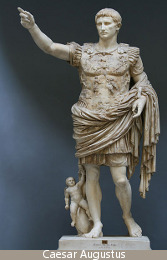"Republican National Convention events include evangelical prayers and Tea Party fervor"
Body
“The evening delivered both earnest prayers and Tea Party policy, and produced something else: a sometimes-dissonant mix of religion and politics.”
Discussion
The Zealots (Part 2)
 Read Part 1
Read Part 1
There were two political choices facing the Jewish person in Judea under Roman rule—submit or rebel. Those choices were personified by two groups or sects that were active during the period—the Herodians and the Zealots. This is not to say that every Jew belonged to one or the other of these “fraternities.” They each actually had very few “members” as such. But the Herodians and the Zealots exemplified the extreme ways in which conquered peoples have always reacted to foreign rulers. Who were these Jewish sectaries and how did they themselves respond to Jesus’ unique message of salvation?
The Herodians are mentioned only twice in the Gospels, once in Galilee (Mark 3:6) and once in Jerusalem (Mark 12:13, Matthew 22:16). In each of these occurrences they are associated with the Pharisees in their opposition to Jesus. While they may have agreed with the Pharisees in their religious views, they must have been distinguished from them in their political beliefs. The Pharisees tended to be rather non-political, more concerned about the Mosaic and Oral law and its application to their daily lives. On the other hand, the Herodians, by their very name, must have been active supporters of Roman rule. The Emperor Augustus was wise enough to know that a subject people could be kept under control better if they were ruled immediately by a “puppet ruler” from the people themselves. Therefore, he appointed Herod who was of nominal Jewish background as a descendant of forced converts to the Jewish faith. Herod, his sons, and their sons ruled over the Jewish people for over a century. This rule, however, was exercised by the permission and blessing of Rome. The Herodian dynasty represented Roman rule to the people. Those who actively supported Roman domination of Judea manifested that support by devotion to Rome’s puppets, the Herods. Hence they were known as Herodians.
Discussion
Study: Broadcast TV nudity up 407 percent
Body
“…a new study shows there was a 407 percent increase in pixilated-type full nudity on broadcast television in the 2011-12 TV year — most of it occurring before 9 p.m. and little of it containing the appropriate warning”
Discussion